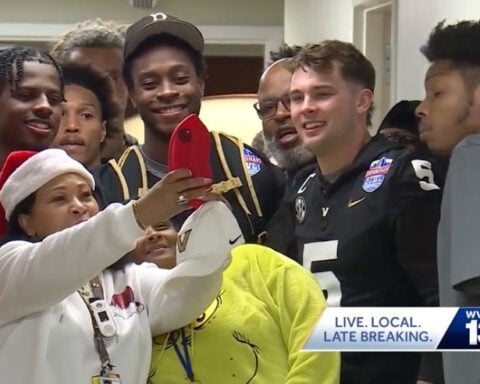In the ever-evolving landscape of online dating, a sinister practice lurks beneath the surface, threatening to ensnare unsuspecting romantics. Welcome to the world of "catfishing" – a phenomenon as deceptive as it is pervasive in our digital age. This deceptive behavior has become increasingly prevalent, leaving a trail of broken hearts and shattered trust in its wake.
What is Catfishing, and Why the Fishy Name?
Catfishing is the act of creating a fictional persona online, often using fake photos and fabricated information, to lure others into an emotional or romantic relationship. The term originated from the 2010 documentary "Catfish," where filmmaker Nev Schulman fell victim to an online romance scam and discovered that his love interest wasn't who she claimed to be. Just as catfish were once used to keep cod active during tank transport, these digital deceivers keep their victims engaged in a false reality.
The Bait: Why Do People Catfish?
The motivations behind catfishing are as varied as the fish in the sea. Some seek attention or validation, while others may have low self-esteem and use fake profiles to escape reality or loneliness; a few even use it as a way to explore their sexual or gender identity safely. In some cases, catfishers are motivated by financial gain, aiming to exploit their victims emotionally and financially.
Spotting the Hooks: Red Flags To Identify You're Being Catfished
1. Too good to be true: Their profile seems perfect, almost like a character from a romantic movie.
2. Limited online presence: They're mysteriously absent from other social media platforms.
3. Reluctance to video chat: They always have an excuse to avoid face-to-face digital interactions.
4. Inconsistent stories: Details about their life don't add up or change frequently.
5. Emotional manipulation: They may quickly profess love or try to isolate you from friends and family.
6. Financial requests: Be wary if they start asking for money, regardless of the reason.
Staying Off the Hook: Protecting Yourself from Catfish
Vigilance is key to avoiding falling prey to catfishing. Online daters must exercise caution and implement protective measures.
1. Reverse image search: Use Google's image search to reveal if the photos have been stolen from other sources.
2. Verify social presence: Cross-check their identity across multiple social media platforms.
3. Video chat early: Before getting too emotionally invested, insist on a video call.
4. Meet in person: If local, suggest meeting in a safe, public place sooner rather than later.
5. Trust your gut: If something feels off, it probably is.
6. Keep personal information private: Do not share sensitive details or send money until you are certain of the person's identity.
7. Use reputable dating sites: Stick to well-known platforms with verification processes.
8. Educate yourself: Stay informed about the latest online dating scams and tactics.
Dating apps and websites have recognized the severity of this issue and implemented verification processes to combat catfishing. These include verification processes, user reporting systems, and artificial intelligence algorithms to detect fake profiles. However, the responsibility ultimately lies with users to safely navigate the digital dating landscape.
As technology advances, so do the methods employed by catfishers. Artificial intelligence and deepfake technology pose new challenges, making it increasingly difficult to discern reality from fabrication.
The psychological impact of catfishing on victims can be severe, leading to trust issues, anxiety, and depression. Support groups and counseling services have emerged to help individuals recover from these experiences and rebuild their confidence in forming genuine relationships.
In the end, while the digital dating pool can be murky, staying vigilant and informed while pursuing romantic connections online can help you navigate these waters safely. Remember, in the game of love, it's always better to be the one that got away than the one that got catfished.

 Inflation in Japan's capital accelerates, keeps rate hike prospects intact
Inflation in Japan's capital accelerates, keeps rate hike prospects intact
 Brazilian authorities: workers at BYD construction site victims of international human trafficking
Brazilian authorities: workers at BYD construction site victims of international human trafficking
 Nidec announces $1.6 billion unsolicited bid for Makino Milling
Nidec announces $1.6 billion unsolicited bid for Makino Milling
 Cole Hutson has 5 assists, defending champion US routs Germany 10-4 in world junior hockey opener
Cole Hutson has 5 assists, defending champion US routs Germany 10-4 in world junior hockey opener
 BOJ debated rate-hike timing, some called for near-term move, Dec summary shows
BOJ debated rate-hike timing, some called for near-term move, Dec summary shows
 Christmas Eve stowaway caught on Delta airplane at Seattle airport
Christmas Eve stowaway caught on Delta airplane at Seattle airport
 Netflix touts biggest-ever NFL streaming ratings, peaking with Beyoncé’s halftime show
Netflix touts biggest-ever NFL streaming ratings, peaking with Beyoncé’s halftime show
 Discover the world of catfishing in online dating. Learn to identify red flags, protect yourself from scams, and navigate digital relationships safely. Don't get hooked by fake profiles!
Discover the world of catfishing in online dating. Learn to identify red flags, protect yourself from scams, and navigate digital relationships safely. Don't get hooked by fake profiles!






